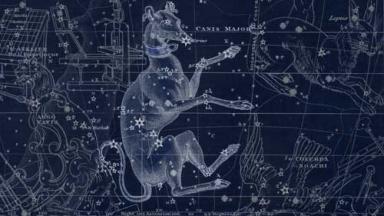Main Content
What are the dog days of summer?

Do you know the story behind the ‘Dog Days of Summer’? Chances are unless you are a history buff, it’s not what you think.
Most people probably think it means the hottest, most humid days of the summer, generally around the beginning of July through mid August. The phrase actually has nothing to do with the hot, sticky days of summer. It refers to the Dog Star, Sirius, and it’s position in the constellations.
Sirius is the brightest star in the constellation Canis Major, which means “Greater Dog”.
Greeks and Romans thought that the rising of the dog star and the sun caused summer’s hot, humid days. Sirius, in Greek, means “scorching”.
Because of a very slow wobble of Earth’s axis, the Dog Star rises later than it did in ancient Greece, but Sirius still rises during our hot, summer days. People tend to associate its rising with our hot days.
So when you see a dog lying around and panting on these hot, humid days, remember it’s not the fault of our Dog Star, Sirius. The poor star has gotten a bad rap for being associated with heat of summer.
When the stars appear at night, take a moment and find the brightest star in the sky. You will have found Sirius, south of Orion’s Belt.
Come see us at the Jasper County Library and we will be happy to show you our collection of books on constellations.
For more skywatching fun, check out the Space.com guide to the Perseid Meteor Shower that peaks around August 12 each year in North America.
Image information: Closeup of Canis Major - Celestial Atlas by Alexander Jamieson - 1822

Follow us on social media